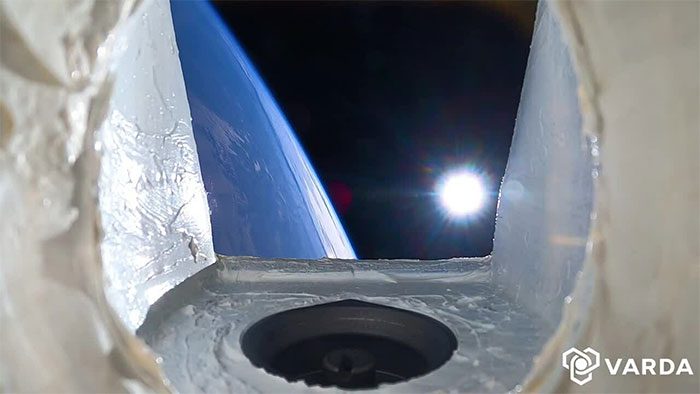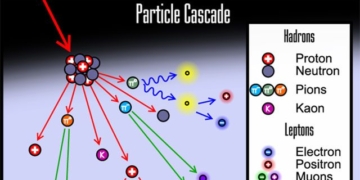The camera aboard the W-1 spacecraft captured an impressive journey back to Earth at the end of February, from hundreds of kilometers away to landing.
The process of the W-1 spacecraft returning to Earth (shortened version). (Video: Varda Space Industries)
After nearly 8 months in orbit, the W-1 capsule from Varda Space Industries returned to Earth on February 21. On February 29, to celebrate the successful mission, Varda Space Industries released a video documenting the dramatic return journey captured by the spacecraft’s onboard camera. Two versions of the video were available: a full version lasting nearly 30 minutes and a shortened version of just 5 minutes.
SpaceX’s Falcon 9 rocket launched Rocket Lab’s “Photon” satellite bus, which carried W-1, into space on June 12, 2023. Upon entering low Earth orbit, the small laboratory of W-1 automatically began developing crystals of the common HIV drug ritonavir. The production of any product in space, let alone a pharmaceutical, seems quite complex. However, scientists have valid reasons for doing so.
Varda Space Industries explains on its website that processing materials in a microgravity environment can benefit from the absence of convective forces and sedimentation, as well as the ability to form perfect structures due to the lack of gravitational stress. Therefore, drug crystals like those in ritonavir can grow larger and have a more robust structure than typically seen on Earth.
Although the experiment concluded in just three weeks, Varda Space Industries repeatedly had to delay plans for W-1’s return due to issues related to approvals from the Federal Aviation Administration (FAA). Finally, the capsule was able to re-enter the atmosphere on February 21. W-1 took less than 30 minutes to leave orbit and descend to Earth. Such a short travel time not only requires extreme speed (approximately 25 times the speed of sound) but also advanced technology to withstand the harsh conditions encountered during atmospheric re-entry.

W-1 landed in a remote area of Utah, USA.
After separating from the main satellite, W-1 began to rotate, providing some impressive images from hundreds of kilometers above Earth. Around the twelfth minute, gravitational forces began to take effect, and everything surrounding the capsule gradually heated up.
At a speed of Mach 25 (approximately 28,200 km/h), the friction between W-1 and the Earth’s atmosphere became so intense that it broke the chemical bonds of nearby air molecules, resulting in a spectacular display of sparks and plasma. Subsequently, a parachute was deployed to slow down and stabilize the landing process.
Ultimately, W-1 landed in a remote area of Utah, USA. There, a team of experts from Varda Space Industries arrived to recover the capsule. Next, they will assess the pharmaceutical components developed in space and will launch additional capsules for further production testing.





















































